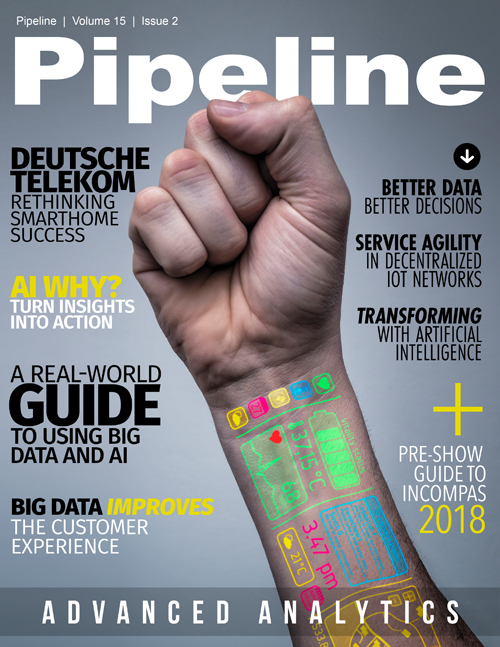A Real-World Guide: Using Big Data Analytics and AI
Ubiquitous access to data has sparked a technological revolution that is touching almost every aspect of everyday life. The desire to gather, analyze and monetize data is driving the demand for automation, which has spurred the advancement of AI, ML and big data analytics. For telecoms operators, this is a win-win scenario—the monetization of data, as well as the use of process automation to reduce costs and advance network virtualization.
Preparing for tomorrow’s network
As CSPs look to evolve their network infrastructures to become more agile and scalable across the cloud, the importance of automated and virtualized technologies such as Network Function Virtualization (NFV) and Software-Defined Networking (SDN) continues to increase. The anticipated benefits of shorter time-to-market, decreased costs, new business models and greater innovation are very enticing. However, telcos are quickly realizing that this virtualized architecture introduces significant new complexities and dependencies.
Moreover, the ongoing transition to 5G and the IoT promises a wealth of new revenue streams and network efficiencies, driving increased investments in digital transformation. In fact, according to research by Heavy Reading, investing in digital transformation is a top priority for telecom operators, with investments in business intelligence and analytics identified as a main priority over the next 12 months.
Yet for those service providers still using a multitude of legacy systems, the race to embrace these new technologies can cause them to stumble along the way. Before rushing to implement ML, AI and automation-driven technologies, it is vital that CSPs simplify and consolidate complex systems to enable seamless support for new types of business models, services and transactions.
Preparing for this evolution might involve creating a single system that replaces multiple legacy architectures, or implementing an ‘umbrella’ solution over the existing systems. In this way, siloes are eliminated to free up the network to be more flexible and dynamic. Greater use of open source platforms and support from organizations such as the Open Network Automation Platform (ONAP) is helping to speed up this migration.
Increasing adoption of AI and big data analytics in telecoms is facilitating the delivery of complex and comprehensive services that help CSPs meet demands for reliability, scalability, coverage, bandwidth, low latency and jitter. This is particularly true with intelligent assurance processes. Here, AI is proving to be indispensable in developing predictive maintenance solutions that automate error-cause identification and analysis, allowing field technicians to speed up troubleshooting, reduce the number of IT tools required and even avert potential issues. This intelligent networking feature will become even more critical as telcos operate with an increasingly lean field workforce.
Working together, analytics combined with AI enables automated optimization that feeds integrated assurance capabilities and vice versa. Because of the complexity of network-hardware-software interdependencies, humans need the computing power of processors. At the same time, we are learning how to better direct those processors to take on more of these tasks automatically. In this way, a ‘virtuous circle’ of continual service improvement is created.
A number of forward-looking operators have been deploying AI in diverse parts of their network. For example, Vodafone is using AI to address customer woes, and Orange’s smart home product Djingo has an AI-based virtual assistant. AT&T and Verizon have used AI for predictive network maintenance.
Omni-channel’s AI future
Beyond optimization of network performance and assurance to improve the customer experience from the network quality point of view, AI and analytics are being applied to enhance the experience at the customer interface as well. Today’s customer interactions take place across multiple channels with the expectation of a seamless experience. Intelligent CRM and order management solutions are helping service providers adopt an omnichannel approach to integrate all offers, sales and customer service processes—on any device and across all channels. This approach ultimately helps to increase revenue and reduce expensive subscriber churn.
It’s true that AI and data analytics offer considerable hope for tomorrow’s networks, including a better understanding of complex environments, support for less experienced technicians, and lower operational costs. These technologies are paving the way for greater innovation, which is critical to service providers’ ability to reduce costs, increase competitive advantage and successfully drive future strategic direction. The journey, however, will be much smoother if the industry plans carefully and sets realistic expectations for today—and tomorrow.



















